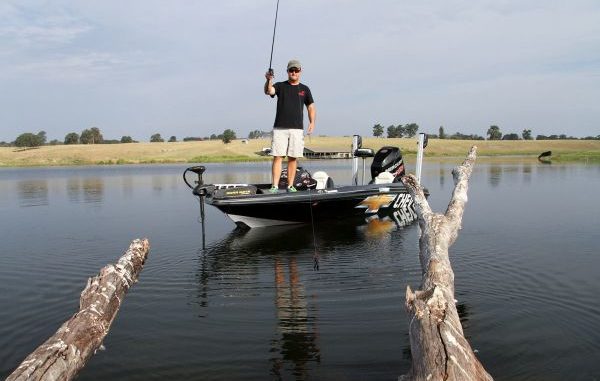
One of the most-common angling misnomers is the general lumping of flipping and pitching into one homogenous image.
While both serve well the laydown angler, they are definitely different deals.
In short, flipping involves an engaged reel and a fixed length of line, with the angler pulling part of that line to the side of the reel as he uses a pendulum swing to generate casting energy.
When the swinging bait aligns with the target, releasing the line allows the bait to drop on target.
Done with the reel disengaged, pitching is more like an underhand cast. Rather than loading the rod with a back cast, the angler lightly holds the bait in one hand to help load the rod tip.
With one fluid underhand motion, the angler flips the rod forward as he releases the bait.
When deciding whether to pitch or flip, FLW Tour pro Jay Yelas said it’s often a matter of proximity. With smaller or mostly crumbled laydowns, distance becomes your greatest ally.
“Most of the time, I pitch more than I flip because you get more bites if you stay back off the fish, and that lends itself to pitching,” Yelas said. “This is especially true in clear water or extremely shallow water.
“The exception to this is when you have dirtier water or really thick cover, where you need to be in close. That’s when you go to the flipping technique.”
But, say you’re working a more-substantial laydown with lots of big branches and outer limbs. You don’t want to miss any opportunities, but you also don’t want to hover right over the fish you’re trying to catch.
Here, your pitching technique makes the long-distance delivery.
“Most of the time, you have to (present a bait) 20 to 30 feet, and it’s hard to flip that far,” Yelas said. “I have had some good flipping bites on this isolated cover, but that has mostly been in muddy water with less than a foot visibility.”
The scenario’s precision requirement also influences Yelas’ presentation.
“If you need to hit one little spot in the cover the size of a coffee cup, you can be more accurate with flipping,” he said. “Also, flipping is more time efficient because you don’t have to reel in line after every presentation.


